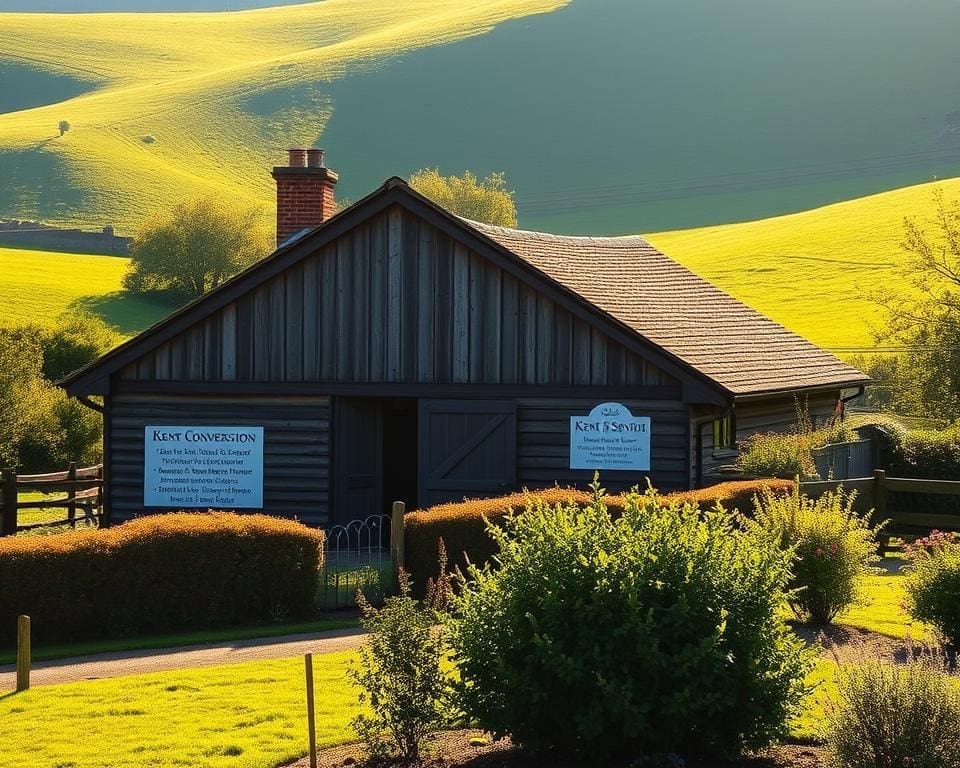Exploring the possibility of turning a stable into a home in Kent is an exciting venture that offers a unique blend of rural charm and modern living. However, the question remains: how do you legally convert a stable into a home in Kent? Understanding the stable conversion regulations in Kent is essential to navigate the complexities involved in this process. From planning permissions to compliance with building regulations, knowing the legal landscape is key to transforming your aspirations into reality. In this article, we will inspire and guide you through the essential steps and considerations for a successful stable conversion.
Understanding Stable Conversion Regulations in Kent
Converting a stable into a residential home can be an exciting venture. Understanding the stable conversion regulations in Kent is crucial for ensuring compliance and achieving a successful transformation. Numerous local laws dictate various aspects of the conversion process, giving potential converters a framework within which they must operate.
Overview of Local Laws
Local laws in Kent encompass zoning regulations, which determine the allowable uses of land in specific areas. These regulations often influence whether a stable can be converted into a dwelling. In areas designated as conservation zones, additional restrictions may apply to protect the character and appearance of the surroundings.
Key Regulations to Consider
Potential converters should be aware of several key regulations that outline the legal requirements for stable conversion in Kent. Important elements include:
- Building codes: Compliance with building standards ensures safety and structural integrity.
- Fire safety requirements: Adequate measures need to be in place to protect inhabitants.
- Environmental impact assessments: These determine how the conversion affects the surrounding environment.
By navigating these regulations proficiently, one can turn an erstwhile stable into a beautiful home, harmonising modern living with traditional structures.

How do you legally convert a stable into a home in Kent?
Embarking on the journey of converting a stable into a residential property in Kent offers an exciting opportunity to create a unique living space. The stable conversion process in Kent requires careful planning and execution. Awareness of the steps involved can simplify the transition from stable to home.
Step-by-Step Conversion Process
Initiating the stable conversion process in Kent starts with an assessment of the existing structure. This includes considering the following:
- Feasibility Study: Evaluate the condition of the stable and whether it meets the requirements for residential conversion.
- Design Planning: Collaborate with architects and designers to create a suitable layout for daily living.
- Permits and Permissions: Investigate local regulations and obtain necessary permissions to ensure compliance.
- Construction Phase: Engage skilled tradespeople to begin transforming the stable into a home.
- Final Inspection: Once construction concludes, a thorough inspection ensures all regulations are met.
Common Challenges and Solutions
The stable conversion process in Kent may come with a few challenges. Facing these can maximise the success of the project:
- Structural Issues: Older stables may require reinforcement of walls or roofs. Consultation with structural engineers can identify necessary repairs.
- Regulatory Hurdles: Navigating local planning regulations can be daunting. Seeking guidance from planning consultants streamlines this process.
- Budget Management: Unexpected costs can arise during construction. Establishing a contingency budget helps accommodate these surprises.
Planning Permission for Stable Conversion in Kent
Understanding the importance of planning permission for stable conversion in Kent is crucial for anyone considering this exciting transformation. Engaging with local regulations ensures a smoother journey towards turning a stable into a beautiful home. Various factors determine when planning permission becomes necessary, and being informed about the application process for stable conversion can save time and resources.
When is Planning Permission Required?
Planning permission typically becomes necessary when substantial changes are made to a stable’s use or its exterior. If the proposed renovations affect the building’s structure, an application must be submitted. Notably, changes that impact the building’s appearance, such as adding windows or altering the roof, require official approval. Understanding these requirements is essential in preventing potential legal challenges later on.
Application Process Explained
The application process for stable conversion is often detailed and demanding. Begin by gathering essential documentation, including site plans, photographs, and design proposals. Submitting a clear and comprehensive application will significantly enhance your chances of approval. Engaging with local authorities early in the process can provide valuable insights and help clarify specific requirements related to your project.
Appeals and Objections
In some cases, neighbours or local councils may raise objections to the proposed conversion. Should planning permission be denied, it is possible to appeal the decision. Understanding the appeals process is vital, as presenting a well-structured argument can often overturn initial refusals. Engaging with the community and addressing concerns proactively can also smooth the path toward gaining the necessary approvals.
Legal Requirements for Stable Conversion in Kent
Converting a stable into a home involves various legal requirements that ensure the process aligns with building regulations compliance in Kent. These regulations not only safeguard the structural integrity of the new dwelling but also protect the health and safety of its occupants. Familiarising oneself with the specific obligations and standards is a vital step in achieving a successful conversion.
Building Regulations Compliance
Individuals undertaking a stable conversion must adhere to building regulations compliance, which are designed to guarantee safety, accessibility, and sustainability in construction. The following aspects are crucial:
- Structural stability must be evaluated to ensure that the building can withstand natural forces.
- Electrical and plumbing installations must meet recognised safety standards.
- Ventilation and thermal insulation are vital for energy efficiency and comfort.
- Accessibility measures should be implemented to accommodate all potential residents.
Health and Safety Considerations
Health and safety considerations play a significant role in the legal framework surrounding stable conversions. It is essential to focus on the following elements:
- Fire safety regulations dictate the installation of smoke alarms and fire exits.
- Material safety must be assessed, ensuring that all building materials are non-toxic and sustainable.
- Site safety during the construction process is necessary to protect workers and neighbours alike.
Converting Stable to Residential Property in Kent
Transforming a stable into a dwelling in Kent requires careful thought regarding aesthetics and functionality. Potential converters must pay attention to design considerations for residential conversion, ensuring that living spaces are not only beautiful but also practical.
Design Considerations for Residential Conversion
When converting a stable into a dwelling in Kent, maintaining the character of the original structure is vital. A successful conversion blends modern conveniences with the building’s historical elements. Considerations may include:
- Layout optimisation: Create an open plan that maximises space while ensuring comfort.
- Natural light: Enhance illumination through strategic window placement or skylights.
- Material selection: Use materials that reflect the local vernacular, preserving the building’s integrity.
Enhancing Energy Efficiency
Incorporating energy-efficient strategies is essential for reducing costs and environmental impact. Sustainable practices not only align with contemporary values but also attract eco-conscious buyers. Essential methods for enhancing energy efficiency include:
- Quality insulation: Invest in high-performance insulation to keep the home warm in winter and cool in summer.
- Renewable energy systems: Consider installation of solar panels or wind turbines to harness sustainable energy.
- Water-saving fixtures: Implement fixtures that reduce water consumption, contributing to a more sustainable living environment.
Permitted Development for Stable Conversion in Kent
Understanding the nuances of permitted development for stable conversion in Kent can greatly facilitate your journey towards transforming a stable into a beautiful home. The concept of permitted development rights allows property owners to undertake certain modifications without the burden of applying for formal planning permission. Familiarity with these rights opens up possibilities while ensuring compliance with local regulations.
Understanding Permitted Development Rights
Permitted development rights offer an easier pathway for those looking to convert stables into residential properties. Generally, these rights encompass a variety of alterations and extensions that do not require formal approval, provided they adhere to specific criteria. In many cases, converting existing structures under these rights can save time and resources, making the renovation process much simpler. Key aspects to consider include:
- The size and location of the stable.
- Existing usage of the building.
- The surrounding environment and its impact on the conversion.
Limitations and Exceptions
Despite the flexibility offered by permitted development rights, several limitations and exceptions exist that must be noted. Certain stables may fall under designations such as conservation areas or listed buildings, thereby necessitating additional scrutiny. Furthermore, if the conversion significantly alters the building’s external appearance or if it impacts neighbouring properties, formal planning permission could still be required. Careful assessment of these factors ensures a smoother conversion process without unexpected pitfalls.
Residential Conversion of Stables in Kent: Frequently Encountered Pitfalls
Embarking on a residential conversion of stables in Kent can be both rewarding and challenging. Knowledge of the common mistakes to avoid during this process is essential for a successful transformation. While each project carries its unique challenges, there are frequent pitfalls that many converters face, often stemming from a lack of planning and oversight.
Common Mistakes to Avoid
When planning a stable conversion, awareness of potential missteps can save time and resources. Here are some common mistakes to avoid:
- Neglecting legal requirements: Overlooking planning permissions and building regulations can lead to significant delays.
- Underestimating costs: Budgeting without accounting for unexpected expenses often results in financial strain.
- Failing to engage professionals: Skipping expert advice may lead to costly errors in design and construction.
- Not considering the property’s structure: Ignoring the existing condition of the stables can result in structural issues later on.
- Skipping proper research: A failure to explore community input and local market trends may hinder the project’s success.
Lessons from Successful Converters
Learning from others who have successfully navigated the complexities of a residential conversion of stables in Kent can provide invaluable insights. Here are key lessons from their experiences:
- Plan thoroughly: Detailing every phase of the project helps anticipate challenges and facilitates smoother execution.
- Stay within budget: Set a realistic budget and maintain flexibility to adapt to unforeseen expenses.
- Consult with experts: Engaging architects and builders familiar with stable conversions ensures compliance and quality workmanship.
- Embrace the original character: Retaining authentic features can enhance the appeal of the conversion, marrying old charm with modern functionality.
- Network with the community: Local advice and support can provide practical insights and foster goodwill during the conversion process.
Financing Your Stable Conversion Project in Kent
Converting a stable into a residential property in Kent can be an exciting project, but it also comes with substantial financial considerations. Understanding the various financing stable conversion project in Kent options available is crucial for a successful endeavour. Personal loans, mortgages, and even grants can provide the necessary funding, but choosing the right one depends on your unique financial situation and the scope of your conversion plans.
A well-structured budget is essential for any conversion project. Anticipating unexpected expenses will help keep your financing stable conversion project in Kent on track. It’s advisable to include a buffer for unforeseen costs, such as structural repairs or design modifications, which often emerge once work begins. Having a detailed financial plan will not only keep your project moving forward, but it will also ensure you remain within your financial means.
Moreover, to maximise the value of your investment, consider strategic renovations focused on energy efficiency and modern aesthetics that can attract potential buyers or renters in the future. Engaging with a financial advisor can provide invaluable insights into securing the best financing options and making smart financial decisions throughout your stable conversion journey.









